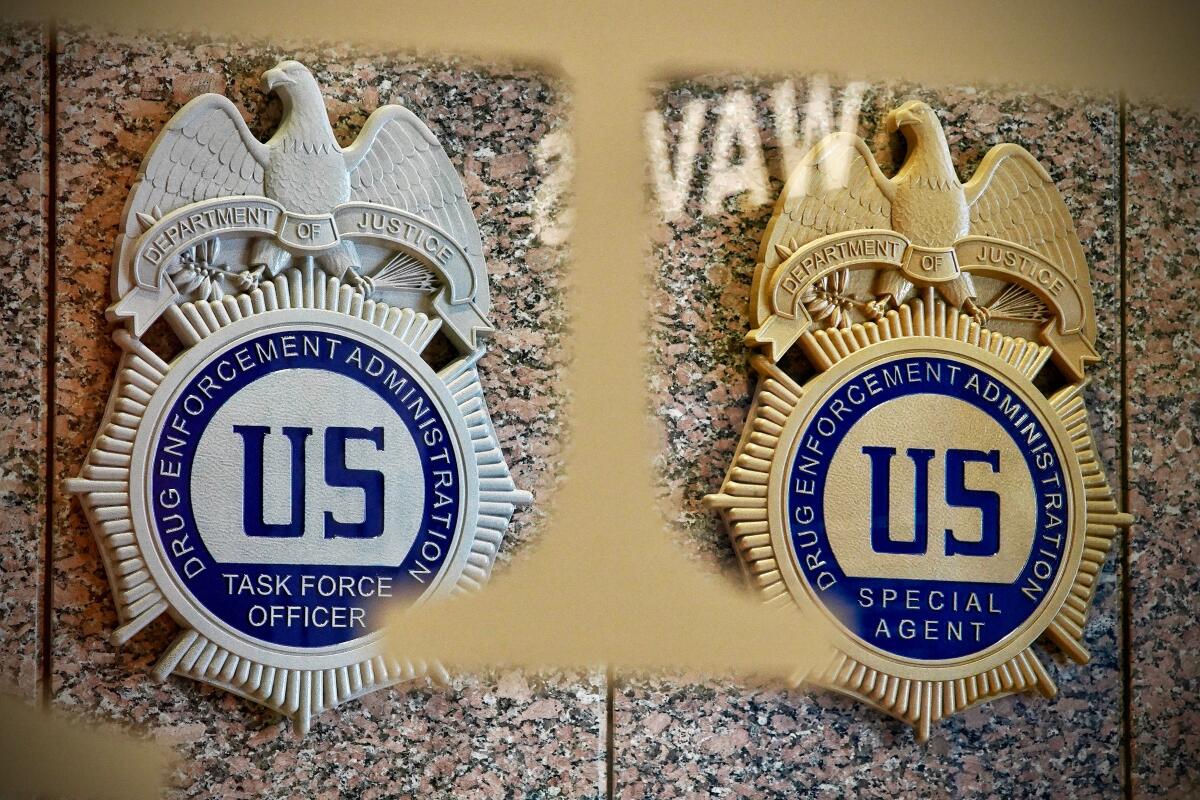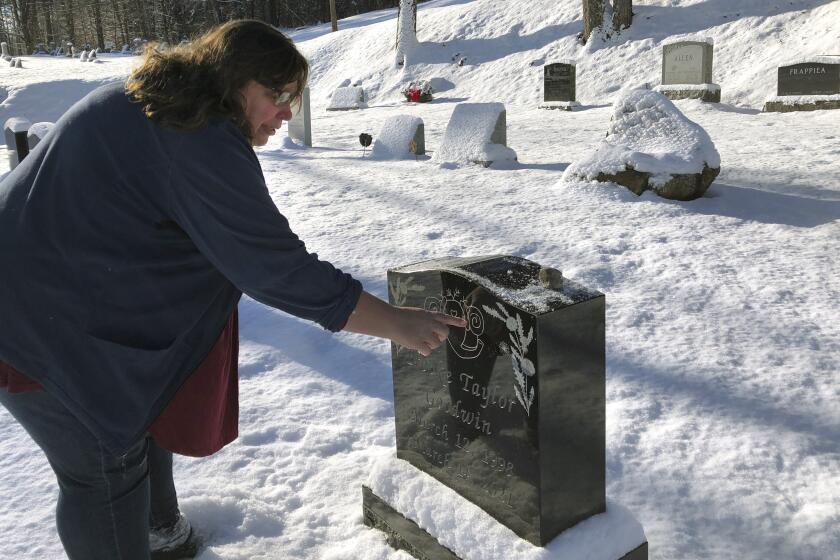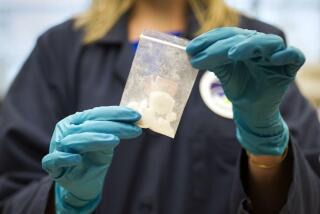L.A. saw signs of deadly street drug xylazine 4 years ago but didn’t alert public

It was at least four years ago that Los Angeles County Sheriff’s Department officials say they began finding signs of a dangerous sedative infiltrating the local drug supply.
At the time, the presence of xylazine — an animal tranquilizer — was not well-known to the public, though it has since become increasingly common, especially on the East Coast. The powerful sedative, also known as “tranq,” has been linked to deaths across the country and can cause human tissue to rot, leaving users with grisly wounds that sometimes lead to amputations.
But because, despite its harms, the drug is not a controlled substance, the Sheriff Department’s crime lab did not conduct further testing to confirm the results and did not alert the public.
“Our mission is very narrowly focused: We confirm the presence of controlled substances,” said Joseph Cavaleri, an acting supervising criminalist in the Controlled Substances Section of the department’s crime lab. “Right now we don’t do that for xylazine because it’s not a controlled substance.”
The rapid spread across the country of xylazine, also known as “tranq,” has local health officials worried it will exacerbate an already alarming overdose crisis.
But he confirmed that the lab’s gas chromatography–mass spectrometry testing had been picking up indications of the drug’s presence in samples for years.
“Working as an analyst, I have seen it as long as four years ago,” Cavaleri said. Since then, the substance has popped up “from time to time,” but he said it wasn’t clear how often because the Sheriff’s Department doesn’t track it. It’s also not clear where in the county those samples have come from, or whether they were part of a large seizure or a small bust.
Drug experts in Los Angeles were taken aback to learn that there had been indications of the drug’s presence in local drug supplies for so long.
“I am surprised that it has been showing up for multiple years,” said Chelsea Shover, an epidemiologist and health services researcher at UCLA. “But it is consistent with the other anecdotal evidence I’ve heard.”
Steven Shoptaw, a professor in family medicine at UCLA who studies drug abuse, echoed Shover’s response.
“I’m literally shocked,” he said.
That’s partly because, until this year, officials gave few clear indications to the public of their findings. In February, a county health official confirmed to The Times that one man — a 25-year-old in El Monte — had trace levels of xylazine in his body when he died in December 2021. But the drug was present in such small amounts that the county medical examiner listed “combined effects of ethanol and fentanyl” as the cause of death.
Then, two weeks ago, the county’s Department of Public Health issued a news release warning Angelenos that the sedative was “increasingly present within illicit drugs in California” and that it was now “likely present” in Los Angeles. The news release mentioned the 2021 death and several others elsewhere in the state. But although it said that xylazine had been detected in samples in cities to the north and to the south, it said nothing about whether there had been similar finds locally.
According to Dr. Brian Hurley, the medical director for the department’s Division of Substance Abuse Prevention and Control, that’s because public health officials hadn’t been told yet.
“The data we get from law enforcement tends to be focused on the mission of law enforcement,” Hurley said. “At the time of the press release, we hadn’t received that information from the Sheriff’s Department.”
Those details came in one day later, he said.
“Although the information from the Sheriff’s Department corroborated our messaging, I don’t think it changed the underlying messaging that xylazine is out in the community and that the public needs to be aware of it,” Hurley continued, saying that he was grateful for LASD’s partnership on the issue.
It’s not clear whether the Los Angeles Police Department crime lab had any similar findings, as the department did not respond to questions sent by The Times this week.
The news comes on the heels of a news release from the Drug Enforcement Administration warning Americans that xylazine has become increasingly common in illicit drug supplies across the country.
Though it is used for animals in veterinary settings, the drug is not approved for use in humans. “Tranq” is often mixed into fentanyl, heroin and counterfeit pills, making potentially dangerous drugs even more dangerous. Since xylazine is not an opioid, the overdose drug naloxone does not reverse its effects.
“Xylazine is making the deadliest drug threat our country has ever faced, fentanyl, even deadlier,” said DEA Administrator Anne Milgram. “DEA has seized xylazine and fentanyl mixtures in 48 of 50 states. The DEA Laboratory System is reporting that in 2022 approximately 23% of fentanyl powder and 7% of fentanyl pills seized by the DEA contained xylazine.”
The combination of the two drugs makes an overdose even more likely, according to the DEA.
The agency did not comment in response to an inquiry sent Wednesday about whether its crime labs had detected the drug in the Los Angeles area — though, earlier this year, federal authorities said they had found it repeatedly in San Diego and Imperial counties.
Kelly McKay, a spokesperson from the DEA’s San Diego field office, told the San Diego Union-Tribune in January that xylazine showed up in drug testing four times during the 2021 fiscal year and 19 times the year after that. Compared with the number of drug seizures per year, that means xylazine was still a relative rarity, occurring in less than 1% of samples tested.
“In terms of all drug exhibits seized, this is a small number of exhibits,” McKay wrote in an email.
In San Francisco, local authorities issued a warning in February after finding small amounts of the drug in the systems of four people who died of overdoses between mid-December and mid-January.
Part of the reason for the drug’s increased appearance, Shoptaw explained, might be because it makes the fentanyl high last longer, thus helping users stave off withdrawal.
“Fentanyl has a very quick half-life, and when you include xylazine with fentanyl, it does two things,” he said. “It reduces some of the painful symptoms of opioid withdrawal. [And] it prolongs the effects of fentanyl so you don’t have to re-up so quickly.”
But aside from appearing as an adulterant in powdered fentanyl and heroin, Cavaleri said the sedative also appeared in counterfeit pills — including at least once in a fake Xanax. Usually when it’s in a mixture, Cavaleri added, the sedative shows up in a lower concentration than the main drug.
“It’s been here for a while,” he continued, “but we don’t know how much and to what extent.”
Figuring that out, Shover said, requires more widespread testing.
“Indications suggest that xylazine is present in Los Angeles in a greater degree than previously suspected,” she said. “However, because there is not systematic testing for it, it’s hard to know by how much.”
More to Read
Sign up for Essential California
The most important California stories and recommendations in your inbox every morning.
You may occasionally receive promotional content from the Los Angeles Times.













